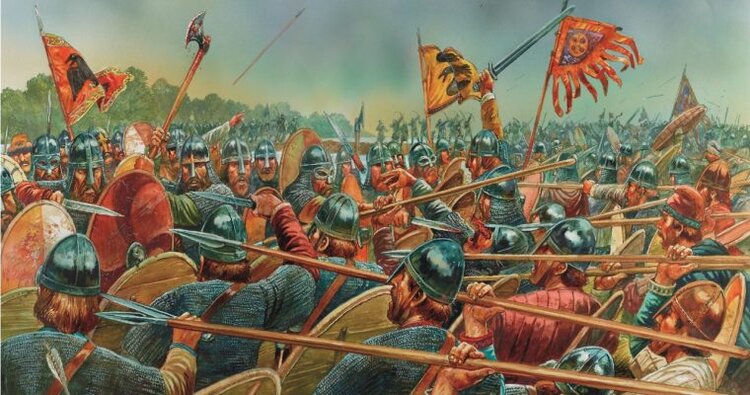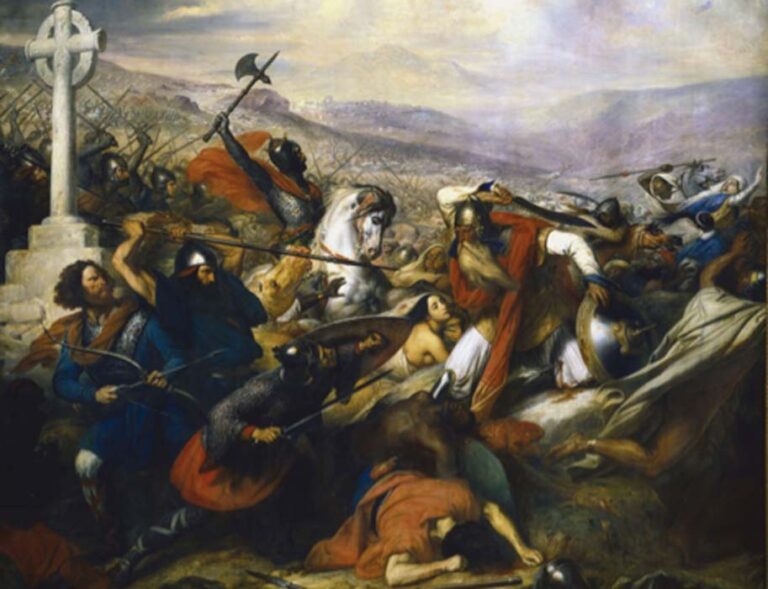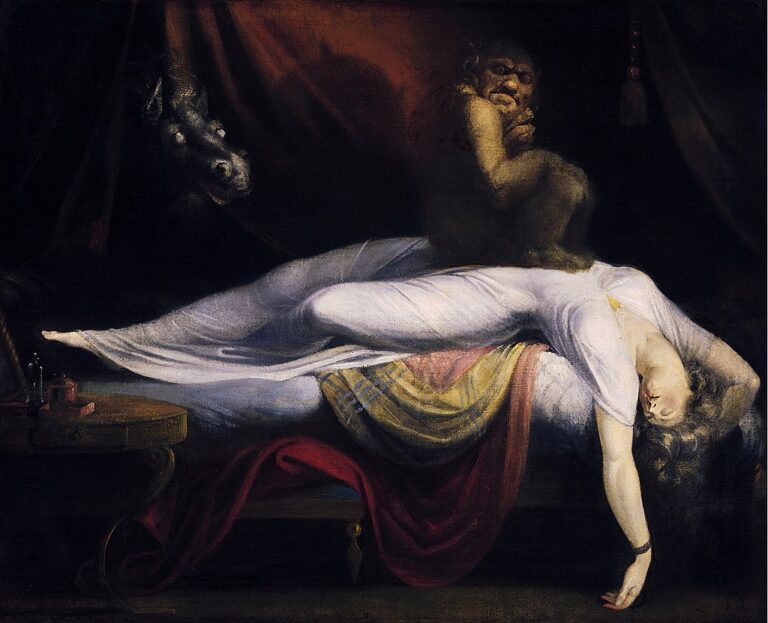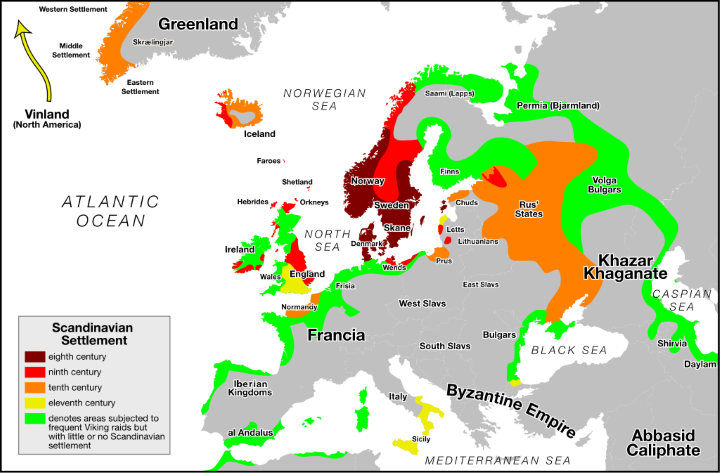In the late 900s, the future king of Norway, Olaf Tryggvason, is driven from his home by the treachery of his half-cousin, who rules the land. His flight takes him across the world of the Vikings, placing him in some of the most colorful events and places of that time. The second part of Olaf’s story is told in my latest novel Sigurd’s Swords, which finds Olaf in the historical kingdom of Kievan Rus’ (present- day Belarus, Ukraine and Russia), or, in the Old Norse tongue, Gardariki, serving his maternal uncle as a household warrior.
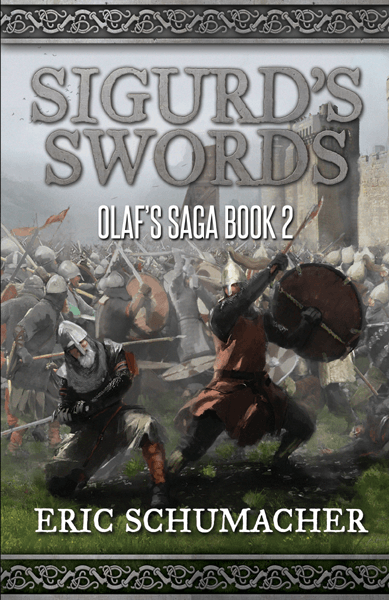
From the feedback I’ve received, it’s clear that more is known of the Vikings in England, France and Ireland, and that fewer readers know about this place called Kievan Rus’ or Gardariki, or the important role it played in the Viking story and in the history of Eastern Europe. Hopefully this post will help shine a bit more light on that bygone kingdom.
What was Kievan Rus?
There is evidence that raiders and traders from what is now called Sweden headed east on the Austvegr, or the East Way, in the early to mid 700s, battling with tribes along the Baltic coastline and founding a trading center in Lake Lagoda in the 750s (decades before Danes and Norwegians headed west for plunder). From there, their exploits took them farther into the land of the Slavic tribes and down the riverways of what is today Poland, Estonia, Latvia, Lithuania, Russia, Belarus and the Ukraine.
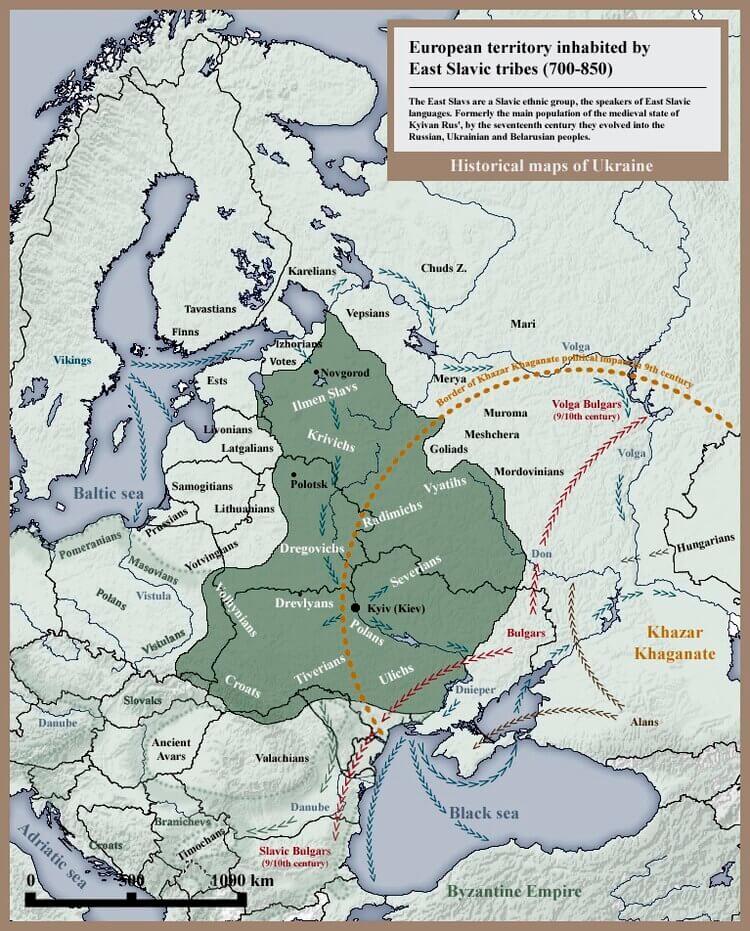
The Russian Primary Chronicle tells it this way. In AD 859, the “Varangians from beyond the sea imposed tribute upon the Chuds, the Slavs, the Merians, the Ves’, and the Krivichians.” The following year, “the tributaries of the Varangians drove them back beyond the sea and, refusing them further tribute, set out to govern themselves.”
Sometime in AD 861 or 862, the Varangians were back, this time at the invitation of the same Slavic tribes. “There was no law among [the tribes], but tribe rose against tribe. Discord thus ensued among them, and they began to war one against another. They said to themselves, ‘Let us seek a prince who may rule over us and judge us according to the Law.’ They accordingly went overseas to the Varangian Russes. The Chuds, the Slavs, the Krivichians, and the Ves’ then said to the people of Rus’, ‘Our land is great and rich, but there is no order in it. Come to rule and reign over us.’ They thus selected three brothers, with their kinsfolk, who took with them all the Russes and migrated. The oldest, Rurik, located himself in Novgorod;…”
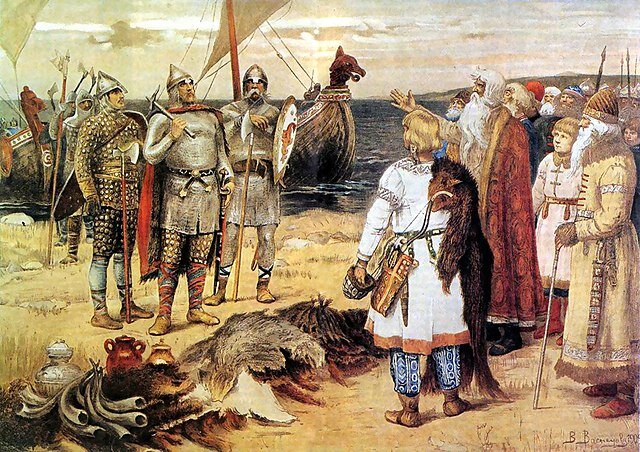
A Kingdom of Mystery
Historians have long doubted that the Slavs did indeed invite the Rus back to rule over them. Since the Russian Primary Chronicle was written centuries after these events occurred, it is believed the tale was constructed to provide some legitimacy to the outsiders who came to rule the Slavic tribes. In addition, there is some evidence that Rus people existed in the east before Rurik came to rule. The Annals of St. Bertin (Annales Bertiniani) relate that Emperor Louis the Pious’ court at Ingelheim, in AD 839, was visited by a delegation from the Byzantine emperor. In this delegation there were two men who called themselves Rhos.
That is only one of the many anecdotes shrouded in the mists of time. For instance, we still don’t know why they were called Rus, though it is believed the name is derived from the Proto-Finnic name for Sweden (Ruotsi), which in turn may be descended from an Old Norse term for “the men who row” (rods-). Nor do we know how the Rus name relates to the name Varangians, which is another word used to describe the newcomers. We don’t even know what language they spoke for the first century or so of their rule. Was it Old East Slavic? Was it Old Norse? Was it a combination of the two?
About all we know is that a man named Rurik established himself as the Grand Prince and that he and his followers (who we will call the Rus) were in control of the Volkhov River from Lake Lagoda to Lake Ilmen by AD 862 (or thereabouts), and that the Rus did not stop there. The land was rich in furs, honey, beeswax, and slaves, and the Scandinavians were hungry to see what else they could find. Over the subsequent decades, Rurik and his descendants pushed east and south, into present-day Ukraine and Russia, and eventually reached the Black and Caspian Seas. They battled with tribes in and beyond their borders, subjugating some and driving others away. They erected settlements that eventually grew into great towns, such as Novgorod and Kyiv. By the late 900s, their trading empire stretched from Lake Lagoda in the north to the great walled city of Constantinople in the south.
But that is where their expansion stopped.
The Decline of Kievan Rus’
Through the first two centuries of their rule, the Rus continued to expand and consolidate their power, organize themselves within their borders, and grow wealthy off of trade with their southern neighbors. However, their thirst for power outstretched their abilities. They failed to break the might of Constantinople, which used a combination of statecraft, bribery, marriages, and proxy wars to keep the Rus at bay. In AD 971, the Rus army under Grand Prince Sviatoslav overran the Bulgarian Empire, only to be destroyed at the Siege of Drastar by the Byzantines, who took exception to a conquering Rus army on their northern border.
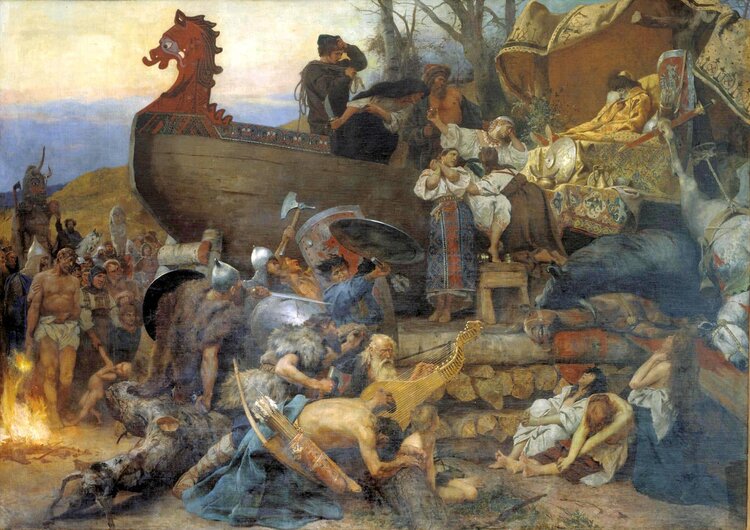
By the 1100s, internal power struggles among the ruling class and the decline of Constantinople as a trading power further weakened the state. At the end of the 12th century, Kievan Rus’ fragmented even further, into roughly twelve different principalities. The power of the Rus dissolved and the formation of smaller nation-states began.
The Allure of Kievan Rus’ in Fiction

I have long been fascinated by Kievan Rus’. In many ways, it feels like an untapped story just waiting to be discovered and told. As in other lands, the Rus’ presented a real threat to the local populations, but in Kievan Rus’, those populations were war-like and ever-shifting. Add to that the vastness of the kingdom and its forests, the cold winters, the dangerous waterways, the power-hungry leaders and so much more, and it becomes (in my mind, at least) a powder keg of ever-present danger for anyone who dared seek their fortune and fame within its borders.
My novel, Sigurd’s Swords, takes place in the 900s, which was a particularly tumultuous time in that kingdom – a time of expansion and wealth and warring, as well as a time still shrouded in mystery. It is into that setting that I ventured with my characters Olaf and his friends Torgil and Turid, and one that I feel richer for exploring.
Thanks, as always, for reading. If you liked it, please feel free to sign up for my Readers Club or share with others who might be interested.
Sign Up
Sign up to have new blog posts and other free content delivered to you monthly!
